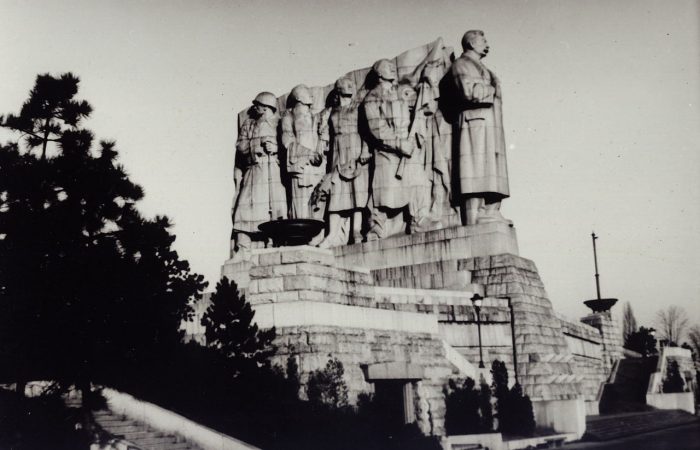
Students Blog: The “meat queue”
September 3, 2019The following blog is the outcome of our ESSR Summer School: State Socialism Beyond Textbooks, and it was written by summer school students (and then edited for clarity). The task was to see an object of their choice through the lens of different perspectives, as we develop them in our methodological guidelines. And while it may lack some historical accuracy, it testifies to our students’ deep interest in the past.
Between 1949 and 1955, an enormous figure rose above the city of Prague. This figure was the monument to Stalin, which was to be the largest set of sculptures in Europe. Even though it was a very ambitious project to adequately represent Stalin’s glory, it was purposely destroyed after 7 years, because of the bad reputation the monument had in Prague, and also because of the new leader of the USSR, who was exposing the old mistakes done in Stalin’s regime.
We think the monument is a good representation of the mindset, or you can say ideology, of the communist/Stalinist Soviet Union. It signifies the most prominent methods of the regime, such as fear and control, in addition to its megalomania and obsession with symbols. The statue of Stalin was situated above the city center on Letná, and it was meant to be a constant presence that was supposed to remind people that they were always watched by the regime, metaphorically represented by Stalin. We could see similarities to the huge portraits of communist leaders carried in parades all over the world in different communist regimes. To this day, the place on Letná where the statue stood is commonly referred to as just “Stalin” by people who live in Prague, even though the monument has not been there for a very long time.
Even though it was supposed to be massive project, in the end it just highlights the faulty system, because the whole situation was a failure and the people only made fun of it (hence the name Meat Queue [*which referred to that fact that in the statue, Stalin stood at the front of a line of people -Ed.), and it ended up being destroyed even despite the great expenses used to build it.
Written by:
Samuel Horák — Czech Republic
Amna Mulić — Bosnia and Herzegovina
Jakub Lučanský — Slovakia
Yavor Stoichkov — Bulgaria
